Decracy of Vilthia
| Decracy of Vilthia Decrazia di Vilthia (it) Decrasìe de Vilthie (fur) | |||
| |||
| National anthem: Proeliator Litania Sanctorum (During Sede Vacante) | |||
| Motto: "Unus pro omnibus, omnes pro uno" | |||
Seal of the Governatorate | |||
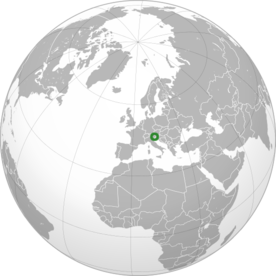 | |||
| Capital | |||
|---|---|---|---|
| Demonym | Vilthian; Yuniversan | ||
| Official language | Italian; Furlan Co-official: German, Venetian | ||
| Official religion | Waldensian Christian | ||
| Ethnic groups | 80% Italians ∟ 90% Friulians ∟ 10% Other italians 12% Others EU 08% Burkinabè | ||
| Government | Decracy Feudal democratic elective absolute monarchy | ||
| - Sovereign | Titianus II | ||
| - Great Vicar | Ilaria Comici | ||
| - President of the Governatorate | Giovanni Alesi (Indipendenza!) | ||
| Legislature | Parliament of Vilthia | ||
| - Upper house | - Council of the Nobles | ||
| - Lower house | - Chamber of the Representatives | ||
| Formation | . | ||
| - Foundation | 10 July 2007 | ||
| - Enlargement | 2 October 2010 | ||
| Population | 91 (residents) 137 (total, residents + non residents) | ||
| Currency | Bitcoin | ||
| EPI | ▲ 3 (2017) high | ||
| HDI | ▲ 0.857 (2017) very high | ||
| GDP Per capita | ▲ € 29.200,00 (2017) high | ||
| Time zone | (UTC+1) | ||
| Date format | dd-mm-yyyy | ||
| Drives on the | right | ||
| Calling code | +39 | ||
| Internet TLD | .vi | ||
| Website | Link | ||
Yunivers is a democratic, free and sovereign land based on nobility.
— Constitution of Vilthia, Article 1.2
Vilthia, officially Decracy of Vilthia (Italian Decrazia di Vilthia, furlan Decrasìe de Vilthia) or State of the Decracy of Vilthia, formerly known as Yunivers, is an autonomous nation-like entity and real community which claims to be a sovereign state, but is commonly known as a micronation. It is located in Europe and is an enclave of the Italian Republic, in the area of Pordenone.
It is de facto an absolute elective monarchy, based on a democratic feudal system.
The sovereignty over its territory is exercised by the Central Protectorate.
Vilthia could be defined the Swiss of the Micronational World for his choice of total neutrality in conflicts of any kind (since 2011) and for the presence of many financial institutions.
A considerable part of the financial income of the micronation, in fact, comes from services provided to other micronations, such as the printing of banknotes, coins or stamps.
What makes this micronation particular, is that it consists of territories that are owned by the current rulers of the micronation.
Founded in 2007 by a few friends, owners of large tracts of land, has undergone many changes and developments over time.
It is a highly developed micronation, managed by an association that has ownership over its entire territory. Residents in the territory are all members of the association. Vilthia has its own water supply, electricity and sanitation, urban furnitures, lighting and public services for citizens. In Vilthia are active a community center, an infirmary, bars and commercial spaces, a library and a chapel.
In 2015 has 92 resident citizens.
Vilthia uses the tld .vi as its official, but it is de facto shared with Virgin Islands.
Geography

The territory is mostly mountainous and hilly to the north, and flat in the south. The territory is entirely crossed by the river Tagliamento. Are abundant the woods, which occupy about 65% of the territory. Other rivers are the Arzino, Striato and Gerchia.
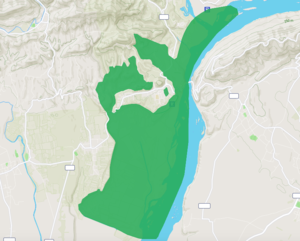
Rivers
The Tagliameto river is since the 10% of the Vilthian territory. It marks the eastern border of Vilthia. The Tagliamento is a braided river in north-east Italy, flowing from the Alps to the Adriatic Sea at a point between Trieste and Venice. The source is in the Mauria Pass, on the border between the regions of Veneto and Friuli-Venezia Giulia. In the upper section, it flows through the historic Carnia region, in the northern part of the province of Udine. In the middle and lower sections, it first sets the boundary between the provinces of Udine and Pordenone and later between the former and the Province of Venice. Finally, it flows into the Gulf of Venice between Lignano Sabbiadoro and Bibione.
Climate
Vilthia, according to the Köppen climate classification, enjoys a typical temperate climate of the middle latitudes, usually rainy or humid all year round and very hot in summer, with cold winters that, in recent years, are becoming milder. The rainfall is concentrated in the periods between March and May, with a slight decrease in the summer months, and a worsening in the period between October and November. The climate classification of the region is a zone E, 2750 GG. The following table shows the values of the nearest meteorological station, located about 17 km as the crow flies from Vignetia, and that can be taken as a reference to the territory of Vilthia.
| Climate data for Vignetia (Source: Wikipedia) | |||||||||||||
|---|---|---|---|---|---|---|---|---|---|---|---|---|---|
| Month | Jan | Feb | Mar | Apr | May | Jun | Jul | Aug | Sep | Oct | Nov | Dec | Year |
| Average high °C (°F) | 5.6 (42.1) |
7.2 (45) |
10.6 (51.1) |
15.1 (59.2) |
20.0 (68) |
23.2 (73.8) |
25.7 (78.3) |
25.3 (77.5) |
22.2 (72) |
17.4 (63.3) |
10.1 (50.2) |
6.4 (43.5) |
15.8 (60.4) |
| Average low °C (°F) | -2.6 (27.3) |
-1.7 (28.9) |
1.2 (34.2) |
5.8 (42.4) |
9.4 (48.9) |
12.7 (54.9) |
14.5 (58.1) |
14.1 (57.4) |
11.5 (52.7) |
7.6 (45.7) |
3.3 (37.9) |
-1.7 (28.9) |
6.3 (43.3) |
| Average Precipitation mm (inches) | 74,9 | 61,6 | 86,2 | 119,0 | 118,2 | 137,9 | 81,2 | 79,1 | 124,3 | 134,5 | 108,1 | 85,9 | 1,210 (47.64) |
| Source: Data derived from [1]. | |||||||||||||
Jurisdiction and administration
The whole territory of the micronation, for the Italian state, corresponds to private property, fenced and inaccessible, that belongs to the members of the Association "Micronazione Vilthia - Associazione Ricreativa e Culturale" (Vilthia micronation - Recreational and cultural association). The citizens of the micronation are the members of the association. Most of these, resides in the territory. The others takes the title of "Non Residentis" citizens.
Government

Vilthia is de jure a Decracy, an original government-system invented by Vilthia's founding fathers.
The politics of Vilthia takes place in an absolute elective monarchy: the Sovereign exercises principal legislative, executive, and judicial power over the State, which is a rare case of a non-hereditary monarchy.
The sovereignty over the territory is exercised by the Central Protectorate, the "legal union" of the effective owners of the lands forming the micronation. They are the members of the Council of the Nobles, the main legislative body of Vilthia.
The nobles members of the Council elect the Sovereign with the procedure of the Conclave.
The office of Sovereign is for life.
Political system
The Sovereign of Vilthia, as said, it has the fullness of legislative, executive and judicial powers, but the constitution provides that they are shared by the sovereign with other state bodies.
The Sovereign, as supreme guide of the Nation, in his supervisory and government duties is assisted by a court of advisors, whose members make up the Small Council. The Council includes the Great Vicar, a member of the Council of the Nobles is the Noble that, on behalf of the Sovereign, oversees the government operations. He deals with the settlement of the affairs of ordinary administration, and replaces the Sovereign when necessary (is the first in order of precedence to take the place of the Sovereign in his absence), the First Knight of the King as military and security advisor, the Camerlengo of the Central Protectorate as high secretary of the Sovereign, and the Master of Minting as financial advisor.
Legislative power is shared with the Parliament, composed by the Council of the Nobles and the Chamber of Representatives.
Otherwise, executive power is more fragmented and is exercised by different bodies on the basis of competence criteria.
However, we can say that the main holder of executive power is the President of the Governatorate, who is directly elected by the citizens for a 5-year term.
The Governatorate represents the governing body of the Central Protectorate, taking care of the ordinary administration of the practical aspects of the State, and is structured in departments.
The President nominates the heads of the departments, who will form the Royal Commission of the Governatorate, the executive council of the Governatorate.
Judicial power is exercised by the courts established by the Sovereign, to whom total independence is ensured.
Sede Vacante
The Sede Vacante (Vacant Seat) is an expression that refers to the vacancy of the Regency Seat of the State. It is Latin for "the seat being vacant" (the ablative absolute to sedes vacans "vacant seat"). After the death or resignation of a King the Central Protectorate becomes sede vacante. During this period, the Central Protectorate and the Nation are administered by the College of the Noble Families, represented and supported by the Camerlengo, the secretary of the late King.
Conclave
See: Sede Vacante
A Conclave (from Latin cum clave, with key - "Closed with key" ) is a meeting of the College of the Noble Families, during the period of vacancy of the Regency Office, to elect the new Sovereign choosing from one of the Heads of the 5 Great Houses. During this process the Nobles are closed in the Hall of the Boats, where they perform the polls.
List of Sovereigns
List of Regents of Saint Sebastian and then Sovereigns of Vilthia:
| Name | Life | Became Monarch | Ceased to be Monarch | Relation to previous Monarch | Family |
|---|---|---|---|---|---|
| Umberto Zannier as Umberto |
1886 - 1935 |
1933 | 1935 | none | Regent of Saint Sebastian Lineage of Zanniers |
| Luigia De Biasio as provisional regent |
1890 - 1972 |
1935 | 1947 | Spouse | Regent of Saint Sebastian Lineage of Zanniers |
| Giovanni Zannier as Giovanni |
1926 - to present |
1947 | 1985 | son | Regent of Saint Sebastian Lineage of Zanniers |
| Santa Zannier as Santa |
1928 - 2012 |
1985 | 2007 | sister | Regent of Saint Sebastian Lineage of Zanniers |
| Lodovico Della Vedova as Tiziano |
1991 - to present |
2007 | 2010 | Office Established | Regent of Saint Sebastian and Sovereign of Vilthia Lineage of Della Vedovas |
| Claudio Zannier as Claudio |
1994 - to present |
2010 | 2013 | None | Regent of Saint Sebastian and Sovereign of Vilthia Lineage of Zanniers |
| Federico Marcuzzi Zappi Zannier as Tiziano II |
1995 - to present |
2013 | to present | Second cousin | Regent of Saint Sebastian and Sovereign of Vilthia Lineage of Zanniers |
Council of the Nobles
The Council of the Nobles is composed from nobles representing various regions of Vilthia. One of them is elected King of Vilthia, a position he held together with his role of governor of his region. Another one is elected Gran Vicario.
Actually:
- Titianus II of the House Zannier: Sovereign and Lord of Vignetia
- Giulia of the House Martini: Lady of Teratiliventhia
- Mattia of the House De Stefano: Lord of Pozut and First Knight of the King
- Lorenzo of the House DeBiasio: Lord of Colat
- Ilaria of the House Comici: Lady of Ildha and Great Vicar
Small Council
The Small Council is the body who advises the Sovereign.
Governatorate
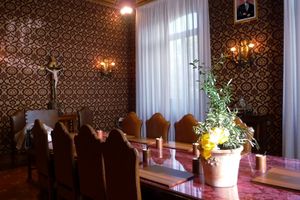
The Governatorate of the Central Protectorate is the entity that, on behalf of the Sovereign, holds in his name the executive power over the territories of Vilthia. It also holds the executive power over the unincorporated territories. The President of the Governatorate is elected by the citizens of Vilthia and of the unincorporated territories every 5 years. The President appoints the Commissioners of the external Protectorates of San Michele and Vega. The president is also the representative of the Central Protectorate in relations with foreign states and organisations.
The Royal Commission of the Governatorate is an advisory body, where the heads of the Governatorate's departments meet with the President to define the actions and policies of the Governatorate, implement the guidelines and directives of the President, and update him on relevant issues.
May issue directives with force just inside the Governatorate and in the areas of expertise.
History
Etymology
The name Yunivers derives from the Latin Universalitatis Feudalis Medio Taliaventum (Universal Feud of the Middle Tagliamento), the name given to the ancient Feud. Vilthia is the ancient name of the medieval Feud.
Feudal era: Vilthia was Pinzon
Following the decline of the Roman Empire, Friuli underwent many barbarian invasions until the conquest of the Lombards, who settled the capital of the Duchy in Cividale. After the fall of them, the region became the first brand of the Holy Roman Empire, and then under the jurisdiction of the Fatherland of Friuli - Aquileia Patriarchate. In this period there is the oldest document in which appears a Lord of Pinzon: we are in 1134 and the honorable man in question is Pinzon Hermann (Herman de Pinzon). So surely in this age there was already a castle and a feudal jurisdiction, which extended from about the Arzino river to the village of Clauzetto, bordering the feud of Spilimbergo. The most supported thesis says that the family of Pinzon derived from the nearby Ragogna, but doubts have been raised about that. In any case, the Lords of Pinzon were known for their loyalty to the Patriarch, although subsequent economic difficulties and family disagreements led to a gradual decay. In 1344 took place within the walls of the castle a family vendetta: Manfredo, helped by its own branch of the family, killed his cousin, uncles and a servant. The fact aroused indignation throughout the Friuli region and forced the Patriarch to take the castle siege, which was captured after forty days. This event marked the end of the Lordship of the Pinzons.
The secret Brotherhood of Saint Sebastian

Following the fall of the feud and the rise to power of the family Savorgnan, despots, some of the folks gathered in the feud a secret society in 1346: the Brotherhood of St. Sebastian. This organization was responsible for helping the people and the poors, waiting to restore the original power. Of this secret society we have limited written informations, who are currently stored in the Secret Archives of Vilthia. We can say, however, that the brotherhood played a very important role in the community, especially during the world wars, helping the population and supporting the resistance. The society finally disappeared in 1946, following the end of World War II. The last members of this organization were the grandparents of the founders of Vilthia, that have found in their homes old documents concerning those facts.
The Rebirth
In 2006, 5 grandchildren (and owners of land forming Vilthia) of the last members of the brotherhood came to know the whole story of their grandparents, and came into possession of all the written documents of the brotherhood. In 2007 they founded Vilthia, adopting some of the laws and the traditions of the ancient feud.
The Tagliamento's Micronations Protocol of Agreement
In 2007 Vilthia was formed only by the territories of the actual capital, Vignetia, and from the provinces of Ildha, Colàt and Pozut. After the signing of the Tagliamento's Micronations Protocol of Agreement between the Decracy of Yunivers and the Republic of Vallarian (actual Province of Teratiliventhia), in 2009, the two micronations became a single entity, controlled by the Central Protectorate. Before of this, the administration, the government and the laws of Vilthia were very different.
Internal Conflicts
Following the signing of the Tagliamento's Micronations Protocol of Agreement, and the fusion between Yunivers and Vallarian, the Nobles of Pozut and Colàt began to criticize harshly the policy of the Central Protectorate, and were not happy of the changes that were made to the administrative and political system of the micronation. This led to an internal separation and to some conflicts, which gave almost started a civil war. On a side, the provinces of Vignetia, Ildha and Teratiliventhia. On the other, Pozut and Colat. This lasted for 4 months; at the end there was a diplomatic solution, and the conflict ceased.

Culture
The Decracy of Vilthia is characterized by the culture of the Italian region that surrounds it, the Friuli. It shares, in fact, with the Friuli the language, the customs and the traditions. It has retained many traditions of the State of the Church, as in the Middle Ages the area was a feud of the Patriarchate of Aquileia, which was controlled by the Church.
Museums

The official museum of Vilthia is the Central Protectorate's Museums. The museum hosts all the archaeological finds recovered in Vilthia, the art collections of paintings and sculptures (the result of legacies left to the brotherhood of Saint Sebastian) and a section about the history of the micronation.
The museum's sections are located near the Central Protectorate Palace and in some halls of The Ossuary (Ossario Palace).
It is open to visitors during the summer months, from May to September, and the cost of the ticket is 2 euros. During the rest of the year you can program guided tours by contacting the Direction of the Museums at the Governatorate.
The Palaces
Due to its ancient history, in the territory of Vilthia there are many palaces and villas, now part of the Vilthian association and owned by its members. Some of these buildings are instead owned by the association itself (such as the Central Protectorate, Tristan Palace and Ossario).
The Central Protectorate Palace (Palazzo del Protettorato Centrale), in Vignetia, hosts the seat of the Central Protectorate and the Sovereign's de jure official residence. It is a building built in 1930 by the Saint Sebastian association (now Vilthia association) as headquarters. It is structured on three floors above ground and one underground floor.
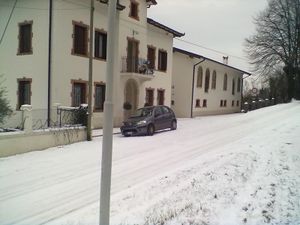
The Felice Palace (Palazzo Felice), in Vignetia was built between 1850–60 and is adjacent to the Central Protectorate. During World War 2 there was built an underground passage that connects the two buildings, still used. Felice Palace is structured on three floors. At the ground floor hosts some offices, and on the upper floors some apartments.
House De Stefano purchased the building in 2018.
The Tristan Palace (Palazzo Tristano), was built in the first half of the XIX century by Zannier family as an hotel. In the following years it was abandoned, it was recovered in 1950. Since 2018 the palace hosts the offices of the Governatorate and the official residence of the president of the Governatorate.

The Ossario Palace is a castle, originally designed as an ossuary, located on the Pascal Mountains, feudal seat of the Province of Pozut.
The Ossario is a mausoleum, unfinished, which would house the remains of about thirty thousand German and Austrian soldiers killed in WWI. The German government chose as the site of building a hill called Pion, located not far from the bridge on the river, where you could enjoy a spectacular view of the Tagliamento. The building project was completed in 1937, and in 1938 was built a life-size statue of the mausoleum, in wood and reeds, to assess what would be the appearance of the finished work. The following year began the construction of the structure, made of stone. The outer blocks were from the quarry of Somplago, while those for the interior, the most precious material, came from quarries near Verona. These stones were transported by train to the local station, then rolled up to the top of the hill. The monolithic columns are larger, weighing about 18 tons.
After the defeat of Nazi Germany, the site was abandoned. It was purchased at an auction by the Saint Sebastian association in 1991. The palace was derelict and invaded by the forest. In 2000 work began on the restoration of the structure, which was completely freed from the vegetation in 2010. Currently the site is unusable in many halls.
Nobility
The families considered noble, are those whose presence is attested from ancient times of the feud, or those invested by the King. The families, or Houses, are divided into Lower Houses and Great Houses. The Great Houses are those that are currently members of the Council of Nobles and Lords of the 5 territories of Vilthia.
Nobility titles
- Dukes
- Marquises
- Counts
- Barons
- Patricians (Referred to as Sers)
Great Houses
- Zannier - (Lords of Vignetia)
- Martini (Lords of Teratiliventhia)
- De Stefano - (Lords of Pozut)
- Comici - (Lords of Ildha)
- DeBiasio - (Lords of Colat)
Lower Houses
- De Biasio
- Spadone
- Garazzini
- Scatto
- O'Malley
- Vidon
(And others...)
Extinct or exiled houses
- Della Vedova - Dukes: House exiled by Claudius I of the House Zannier in 2010.
- Lafrit - Marquises: House exiled by Claudius I of the House Zannier in 2010.
Vilthia's Secret Archive
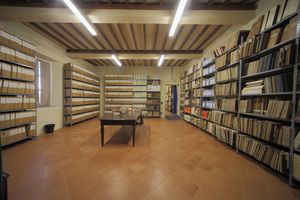
The Archivio Segreto Vilthiano pursues it specific activity aimed at preserving and enhancing the deeds and documents related to the government of the Pinzon's Feud and Vilthia micronation. It primarily serves the Government of Vilthia and secondly offers its services to scholars of all faiths from all nations. The old name, the « Archivio Segreto De Pinzon » has been documented as from the mid 17th century, when, like today, it was given to the pinzon's private (secretum) archives over which them exercised supreme and sole jurisdiction. The documentary heritage housed in its vast storerooms spans about twelve centuries (8th to 20th centuries). It consists of over 600 archival fonds and is stored on over a linear kilometres of shelving, some of which is in the Bunker, a two-storey underground vault below the Central Protectorate Palace. After King Della Vedova opened the doors of the Archivio Segreto to scholars back in 2007, it has become one of the most famous history research centres in micronational world. In accordance with a practice established in 2007, the king grants free access to the documents «grouped into periods» from 1100 to 1939. However, it is not possible access to all documents, but only a few specific sections.
Flag
The Flag of Vilthia is called the Aquila in Striscie (Eagle and Strips). The old, traditional flag's name was Supreme Green Triangle.
Traditional flag
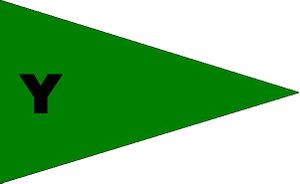
The old flag, in use from the foundation of Yunivers to 2012, was the old emblem of the Secreet Brotherhood of Saint Sebastian. Has been adopted as flag of the micronation some days after the foundation, by the first Council of the Nobles. Has been replaced with a new flag from June 1, 2012. The old flag is today in use as vexillum of the King and as traditional flag of the Central Protectorate
The new flag
The new flag, adopted in 2012, is composed of 3 strips. The first strip is blue, for the water of the rivers. The second strip is green, for the fields and the woods. The last strip is gold, to represent the power and wealth of the nation. On the left, there is an emblem with a golden eagle, symbol of these lands for centuries, holding in its beak a cross.
Cuisine

The cuisine reflects what are the traditions of the surrounding region. Some typical dishes are the Brovada, Frico, the Montasio cheese, the Musetto and Polenta. As in other rural areas, we find the Panade (old bread and milk, cooked), the Ridic cu las frices (radicchio topped with bacon), the Mule (cream of pig's blood), Lat and Sal Cule Polente (salted milk with polenta). A dish typically tied to place, and that we also find in the nearby Cosa Valley is the so-called Balote, a ball filled with cheese and polenta cooked over coals or ashes and served with mushrooms and herbs. The cuisine of Vilthia also includes those who are the local products: freshwater fish, crayfish, mushrooms and asparagus. One of the dishes recently become a symbol of Vilthia is rice with nettles.
Schools and universities
The schools and the universities in Vilthia are institutes controlled directly by the Central Protectorate.
First level schools
In Yunivers there are no Kindergartens, Elementary schools and High schools. The residents attend schools in Italian territory, beyond the border.
Universities
The Somma Università Yuniversana (Supreme Yuniversan University) is the official university into the Decracy of Vilthia.
Demographics
Population and languages
Almost all of the Vilthian citizens live inside the Decracy of Vilthia. In 2018, there are 137 citizens of which 92 are residents. Although the official languages are Italian and Friulian, there are areas in which people speaks and understands German and Venetian.
Citizenship
The Vilthian Citizenship is based on jus sanguinis (birth from a citizen, even outside the state's territory). Can apply for citizenship only those who, for reasons of work or family, must live within the national territory.
Foreign workers
For the functioning of the state and of all its agencies and institutions there are some foreign employees that works in the country. However, they are neither residents nor citizens. They have a permanent permit of access, which allows them to get to work. However, unless the duty undertaken by them so provides, they are not allowed to spend the night in the national territory.
Administrative Division
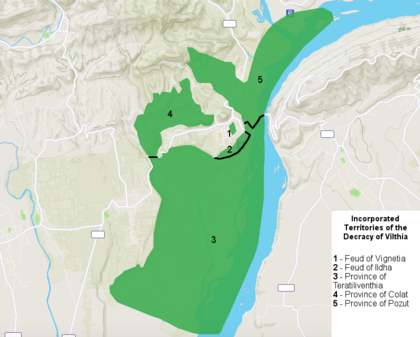
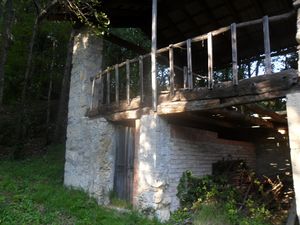
Although the territory is large only about 12 km2, it is divided into Provinces or Feuds, which in fact are municipalities. The feuds differ from the provinces for greater autonomy granted to them. The divisions are 5:
| Civil Coat of Arms | Ruling House Seal | Name | Type | Population | Overlord | Notes |
|---|---|---|---|---|---|---|
 |
 |
Incorporated vassal |
Lord of Col |
|||
 |
 |
Incorporated vassal |
Lady of Rik and Great Vicar of the Decracy of Vilthia |
|||
 |
 |
Incorporated vassal |
Lord of The Ossuary and Hand of the King |
|||
 |
 |
Incorporated vassal |
Lady of Santissima |
|||
 |
 |
Incorporated vassal |
Sovereign of Vilthia and Lord of Vignetia |
|||
 |
Unincorporated protectorate |
|||||
 |
Protector |
Transports and facilities
Railways
- Trans-Yunivers Railway
- FP Railway (From Italy)
Airways
- Yunivers Heliport, Colonia City
Highways
- SP1 from Borgo Traghetto to Colonia
- SP2 from Colonia's customs to Mizzari
- SP3 from Colonia to Gerchia
- SP4 from Gerchia's customs to Castellirs and Samontàn
- SP5 from Santissima to Valeriano
- SP6 through the capital; City of Vignetia
- SP7 from the Ossario Palace to Piòn City

Plates
| Sample | Name | Usage | Description |
|---|---|---|---|
 |
Plate for cars and motorbikes | Used by all cars (and motorbikes) registered in Vilthia. | Vilthia Standard. Pattern of code: XX000XX (two letters; three numbers; two-letter code of the province represented by the owner; seal of the province) |
 |
Gendarmerie vehicles plate | Used by all gendarmerie vehicles | Vilthia standard. Pattern of code: CG000XX (CG = Corpo Gendarmeria; three numbers; two-letter code of the province of the gendarmerie seat; gendarmerie seal) |
 |
Diplomatic or politician car plate | Used by Central Protectorate vehicles, politicians and diplomatics cars | Vilthia standard. Pattern of code: PC000PC (PC = Protettorato Centrale; three numbers; PC; Flag of Vilthia). |
However, none of these is actually used. The vehicles property of Vilthia and used only inside the micronation usa a plate with the SDY (Stato Decrazia Yunivers) or SDV (since 2014; Stato Decrazia Vilthia) and 5 numbers (Example: SDY 000 00)
Postal service
The postal service within the Decracy of Vilthia is carried out by the Yuniversan Postal Service.
Economy
The nation's economy is mainly based on agriculture, livestock, fishing and tourism. Although the political nature of the state is far from a communist line, the shops are state monopolies. Agricultural activity however is free in all its forms, and does not require special permissions.
Primary sector

Agriculture is the main economic activity in the nation. It is practiced by almost every family. It consists of cultivations (Mainly wheat, followed by maize, vegetables, fruits, vineyards and olive groves) and breeding activities (Sheep, cattle and pigs). Subsistence farming is widespread. This practice is the production by households of what they need for everyday life.
Secondary sector

The industrial sector is practically absent in the nation.
Tertiary sector
It is the second most-important sector in Vilthia. Commerce is a state monopoly, so it can only be exercised by the state or by those it appoints. In fact, within the country there are a few shops. These are mainly shops linked to tourist activities, shops for agriculture, food shops and bazaars. Tourism is well developed and encouraged. In the territory there are 2 pubs, a restaurant and a farmhouse. There is also a guest house, a place of lodging for visitors, managed by the government and used principally for the invited visitors and, more rarely, for tourists who request it. Are produced and sold milk, goat cheese, honey, wine, olive oil, fruits, meats, and vegetables.
Currency

Vilthia accept Euro as de facto currency. However, the official currency since October 1, 2018 is the Bitcoin as part of the nations' digitization agenda.
Relying on cryptocurrencies is also a way of not being influenced by macronational governments.
Since 2019, the Central Protectorate has begun "mining" Bitcoin, in order to achieve ever greater financial independence. The mining activity has been temporarily entrusted to APSE, and is held in a secret location.
Internal security and military

Internal security is very important in Vilthia. All boundaries are fenced or delimited by natural obstacles such as rivers or ravines. In some areas have been installed wireless cameras and infrared motion sensors. The security systems are connected with the center of the Gendarmerie in Piòn using the wireless network. It is also used a private security company that implements external patrols.
The Gendarmerie

The corp of Gendarmerie is responsible for security, public order, traffic control, criminal investigation, and other general police duties in Vilthia. The Vilthian Gendarmerie includes two special units, the Rapid Intervention Group and a canine unit (together with the Striated Guard).
While the protection of the Sovereign is primarily the Vicarial Guard's responsibility, the gendarmes ensure public order at the audiences, meetings and ceremonies at which he is present.
The Gendarmerie is composed of Vilthian volunteers and of members of the Vilthian "civil service", who receive a refund for their activities (the "Diaria"). Although there have been planned and realized several stations within the territory, it is currently manned exclusively the operations center in Pion.
Vicarial Guards
See: Vicarial Guards

The Vicarial Guards are the honor guard of the Sovereign of the Decracy of Vilthia and of the Central Protectorate palace.
The Guard is responsible for the security of the Sovereign, dignitaries and all royal buildings, not of the Vilthian state. It is a military unit of the Central Protectorate, not of the Vilthian Decracy. It is composed, as all other corps, of volunteers.
Striated Guards
See: Striated Guards
The Striated Guard is a body of border police.
It is composed of volunteers and is involved in patrolling the borders and guard the entrances. It fully cooperates with the Gendarmerie.

Canine Unit
See: Yuniversan Canine Unit
The Canine Unit is a special unit belonging to the Gendarmerie and also to the Striated Guard. It is in fact composed of members of both bodies.
Access to the territory
The access to the territory of the Decracy of Vilthia is permitted only to the citizens.
Special temporary residence permit shall be issued to those who need access to the territory for study or work.
Visitors can request an access pass at the permissions office of the central protectorate. They must show, at the moment of the request, a valid passport and a criminal record of the country of residence. During periods classified as ' tourism period ', in some specific areas, is allowed to enter and remain for a maximum of 24 hours, with tourist visas. The access to the territory is permitted only at the Access-Points which are located along the perimeter of the fences. Access by vehicle is permitted only with additional special permits issued by the Central Protectorate.
Law
The laws of the state can be considered a fusion of Christian and liberal principles. Much attention is given to the individual and his rights, but there is also a great severity. Although the crime rate is practically zero, respect for the law in Vilthia is strongly felt. The law is very severe in punishment, especially in cases of murder or situations which have breached a citizen in any way. Even illegal immigration and entry into the territory without authorization are punished harshly.
Capital punishment
Capital punishment has been present since the Middle Ages. However, there has been no executions since 1944. In the Middle Ages the death penalty was carried out for the following crimes: Murder, betrayal, offense to the Lord, witchcraft, heresy. The method of execution used until 1400 was the decapitation. It was replaced formally by hanging. Since 1918, the executions are carried out by firing squad. The current legislation provides death penalty for murder or attempted murder of the Sovereign. In addition, the Sovereign, which is responsible for the judicial power, may provide that the death penalty is applied for other criminal offenses (murder, etc..).
Duels and Singolar Tenzone
The Code of Yuniversan Canon Law provides that an accused person, both in civil and criminal cases, has the right to require the trial for Singolar Tenzone (duel). The two parts can fight in person or ask for a champion.
In the case in which the prosecution is represented by the state, the champion will be or will be appointed by the Hand of the King.
This practice has been suspended by Titianus II with the Royal Decree 10/2014. The decree, however, does not remove the rule from the code, but merely a stay of execution.
Smoking, Alcohol and Drugs
The consumption of alcohol is prohibited to all persons under 18 years. Transgressors can be punished with imprisonment even with a one-week detention and the prohibition of purchase of alcohol up to 21 years of age. Smoking is allowed only in private dwellings, and is prohibited the sale of cigarettes within the nation. The consumption and the sale of drugs are prohibited. Selling drugs is punishable by imprisonment up to 25 years. Consumption is punished differently: First offense (minor): 1 year, First offense (severe): 3 years, Second offense: 7 years, Third offense: 10 years. An exception is the Protectorate of St. Peter, where the consumption and sale of drugs are, de jure, legal. The crimes committed under the influence of alcohol or drugs (fatal road accidents, etc.) are punishable by life imprisonment.
Media
Television
The official television channel is the CTY
Newspapers
The official newspaper is the Gazzettino di Vilthia (Vilthia Gazette). The official blog is the Yuniversan Post.
Internet
Most of the territory is covered by wifi internet signal transmitted and maged by Unique, using an Antamedia Hot Spot software.
Constitution
The constitution of Vilthia (Magnus Statutum) is stiff, long and granted. Born in 1300, written as a simple law of the feud. Is then expanded in 1790, by the secret brotherhood of St. Sebastian. Is then adapted in 2007 by the founder council of Vilthia. The procedure for amending the constitution is very long and complex, with an average duration of 1 year and a half.
Process to Change the Constitution
First, the council of the nobles vote to decide to amend the constitution or not. If the motion is approved, the procedure for amendment is officially started. In the first week, the council of nobles makes public the text of the amendments. From this moment, there is a week where people can send letters to the council specifying any dissent. After that, the council of nobles has 3 weeks to examine all the letters and assess the situation from different points of view. At this point, there is a new majority vote. If the motion is approved, begin the consultations. Consultations are 40, one a week for 10 months. At the end of each consultation meeting, a vote is made. To be considered approved, the consultation must be passed unanimously. In the first 20 consultations, they can discuss and make changes. At the end of 10 months, are counted consultations approved. To be approved, the constitutional amendment, the approved consultations must be 50% + 1. If it is, there are 2-month break, in which it is forbidden to discuss the issue. During this period, the first pastor of Vilthia, remains vigilant in case there are divine manifestations against the amendment of the constitution. If at the end of 2 months the pastor believes there are not divine manifestations, there are 6 months in which a majority vote is conducted monthly. If at least 4 of the votes are approved, the amendment to the Constitution enters into force.
Religions
The official religion is Waldensian Christianity. The freedom of worship is granted since 2013, but restrictions are placed by the Central Protectorate on religions classified as dangerous to public safety. In particular, the Muslim religion, is not allowed.
Churches
In Vilthia there are 3 churches: The church of the village of Samontan, the bigger one, the church of the village of Ronchis and the Church of Saint Sebastian in Vignetia. There is also a chapel in the Central Protectorate Palace.

Foreign Affairs
Vilthia is a member of the Saint Matthew Economic Pact, the Union Against Micronational War and of the PIT.
Mutual recognition
The current status of the relations with the Republic of Atlantis in uncertain, as Atlantis joined St.Charlie.
Officially, Vilthia still recognizes the treaty with Atlantis. In fact Vilthia withdraws from a treaty only due to infringements of the treaty itself or after request from the opposite side.
Allies
 Central Antarctic Republic
Central Antarctic Republic Holy Kingdom of Deseret
Holy Kingdom of Deseret Principality of Hashima
Principality of Hashima Principality of Imvrassia (Treaty suspended by Titianus II waiting for a commission of inquiry)
Principality of Imvrassia (Treaty suspended by Titianus II waiting for a commission of inquiry) Kingdom of Legialle
Kingdom of Legialle Principality of Lomellina
Principality of Lomellina
The current status of the relations with the Principality of Lomellina in uncertain, as it dissolved.
Officially, Vilthia still recognizes the treaty and thus recognizes the State of Lomellina. In fact Vilthia withdraws from a treaty only due to infringements of the treaty itself or after request from the opposite side.
Unrecognized nations
The Decracy of Vilthia officially doesn't recognizes the following entities:
- State of Palestine
- Islamic State of Iraq and the Levant
- Northern Cyprus
- Republic of Crimea
- North Korea
- Chinese Popular Republic
- Every micronation which haven't signed a treaty with the Decracy of Vilthia
Embassies
Embassies in foreign countries:
- Embassy to the Italian Republic, with Jurisdiction over the European continent (Rome - Viale Carmelo Bene)
- Embassy to El Salvador, with jurisdiction over the American continent (San Salvador - Bulevar Universitario)
Consulates:
- Consulate to Milan (Milan, Via Ascanio Sforza)
Embassies of foreign countries:
Currently there are no embassies in the State of the Decracy of Vilthia
Requirements for diplomatic relations
The requirements of the micronations that would establish diplomatic relations are:
- Be territorial micronations, with a stable and credible government.
- Do not be involved in wars from at least 2 years.
- Have de facto control over the territory. (This criterion is not binding in the following cases: if the micronation is located in Antarctica, if the micronation is located in a territory with disputed status, if the micronation is not bigger than 20 km2)
Micronational classification
Matthew's Democracy System of classification
In Matthew's Democracy System of classification, Vilthia obtained a score of 3: Fair democracy, needs some improvement .
Dan's System of Classification
In Dan's System of Classification Vilthia can be placed between 4th and 5th world micronations.
Mile's Scale of Economic Potential
In Mile's Scale of Economic Potential Vilthia obtained a score of 3: This micronation has serious potential for a small economy.
See also
- Central Protectorate
- Gendarmerie of Yunivers
- Vehicles Fleet of the Decracy of Yunivers
- Vignetia
- Trans-Yunivers Railway
- LGBT rights in Yunivers

